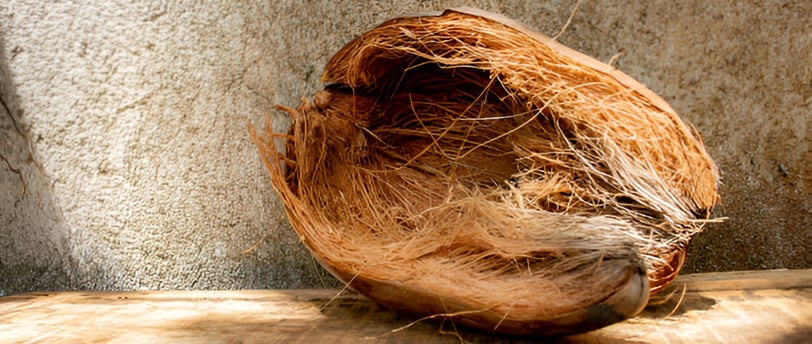Utilization Of Old Coconut Fiber Waste In Indonesia
Nusantara Essentials Team
9/17/20242 min read


Indonesia, a tropical country with millions of coconut trees, has immense potential in utilizing coconut waste, especially old coconut husks. Coconut husks, often considered agricultural waste, hold significant economic promise. This article will delve into the utilization of old coconut husks in Indonesia, from the abundance of coconuts, the formation of coconut husk waste, to the various valuable derivative products.
Coconuts in Indonesia: A Natural Gift
The presence of coconuts in Indonesia is deeply intertwined with the lives of its people. Indonesia's geographical conditions, primarily consisting of islands with a tropical climate, are highly conducive to the growth of coconut trees. Coconuts flourish in various regions, from coastal areas to low-lying mountains. Their versatile fruits, including coconut meat, coconut water, and coconut husks, have become an integral part of daily life in Indonesian society.
Formation of Old Coconut Husk Waste
After harvesting coconuts, the most commonly used parts are the coconut meat and water. Coconut husks, the outermost part of the coconut fruit, are often discarded as waste. However, with advancements in technology and increasing awareness of the importance of optimal natural resource utilization, old coconut husks are being reconsidered as a valuable raw material.
Utilization of Old Coconut Husks
Old coconut husks have stronger and more durable fibers compared to young coconut husks. This makes them ideal for various products, including:
Cocopeat: Old coconut husks processed into fine fibers and compressed into blocks. Cocopeat is widely used as a planting medium due to its excellent water and nutrient retention capabilities, as well as its ideal pore structure for plant root growth.
Cocofiber: Rougher and longer coconut husk fibers. Cocofiber can be processed into various products, such as ropes, carpets, building materials, and furniture fillers.
Handicrafts: Old coconut husks can be processed into various handicrafts, such as bags, hats, and wall decorations.
Advantages of Old Coconut Husks Over Young Coconut Husks
Stronger fibers: Old coconut husk fibers are stronger and more durable than young coconut husk fibers, making them suitable for various industrial applications.
Higher lignin content: Lignin is an organic compound that provides strength to fibers. Old coconut husks have a higher lignin content, resulting in stronger and more durable products.
Higher economic potential: Derivative products from old coconut husks, such as cocopeat and cocofiber, have higher market values compared to products made from young coconut husks.
Conclusion
The utilization of old coconut husks in Indonesia is a significant step towards increasing the value of agricultural products and reducing environmental impact. Coconut husks, previously considered waste, have become a valuable commodity. By continuously developing processing technologies and promoting the use of old coconut husks, we can create sustainable and competitive products in the global market.
Related Articles: What is coco fiber?
Keywords: cocofiber, coconut fiber, natural material, eco-friendly, agriculture, industry, handicrafts.
Nusantara Essentials
Have questions about our products? Let's chat with our expert team!
FOLLOW OUR SOCIAL MEDIA
info@nusantaraessentials.com
+6285183347575
© 2024. All rights reserved.
navigation
NEWSLETTER
Don't miss out on our latest news!
